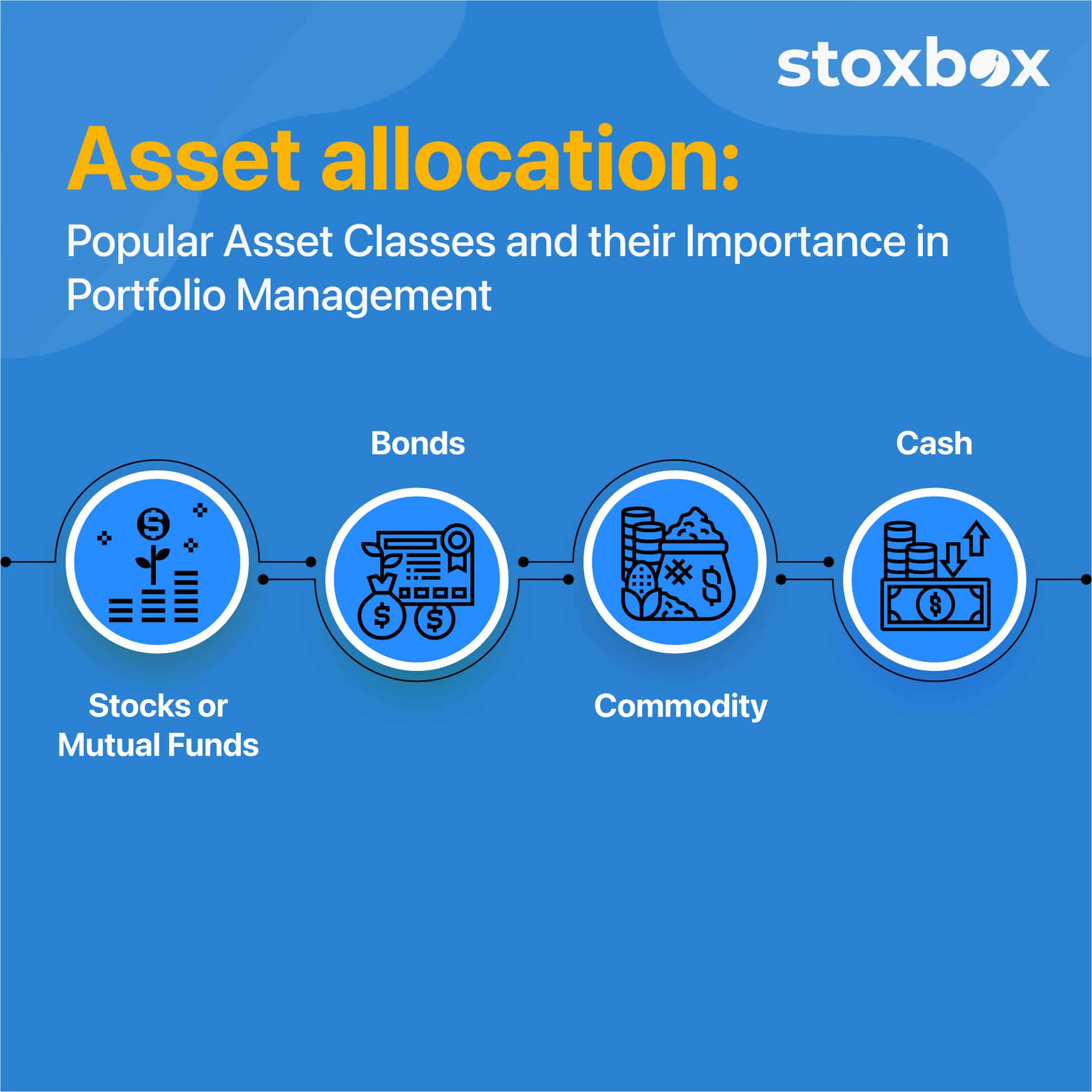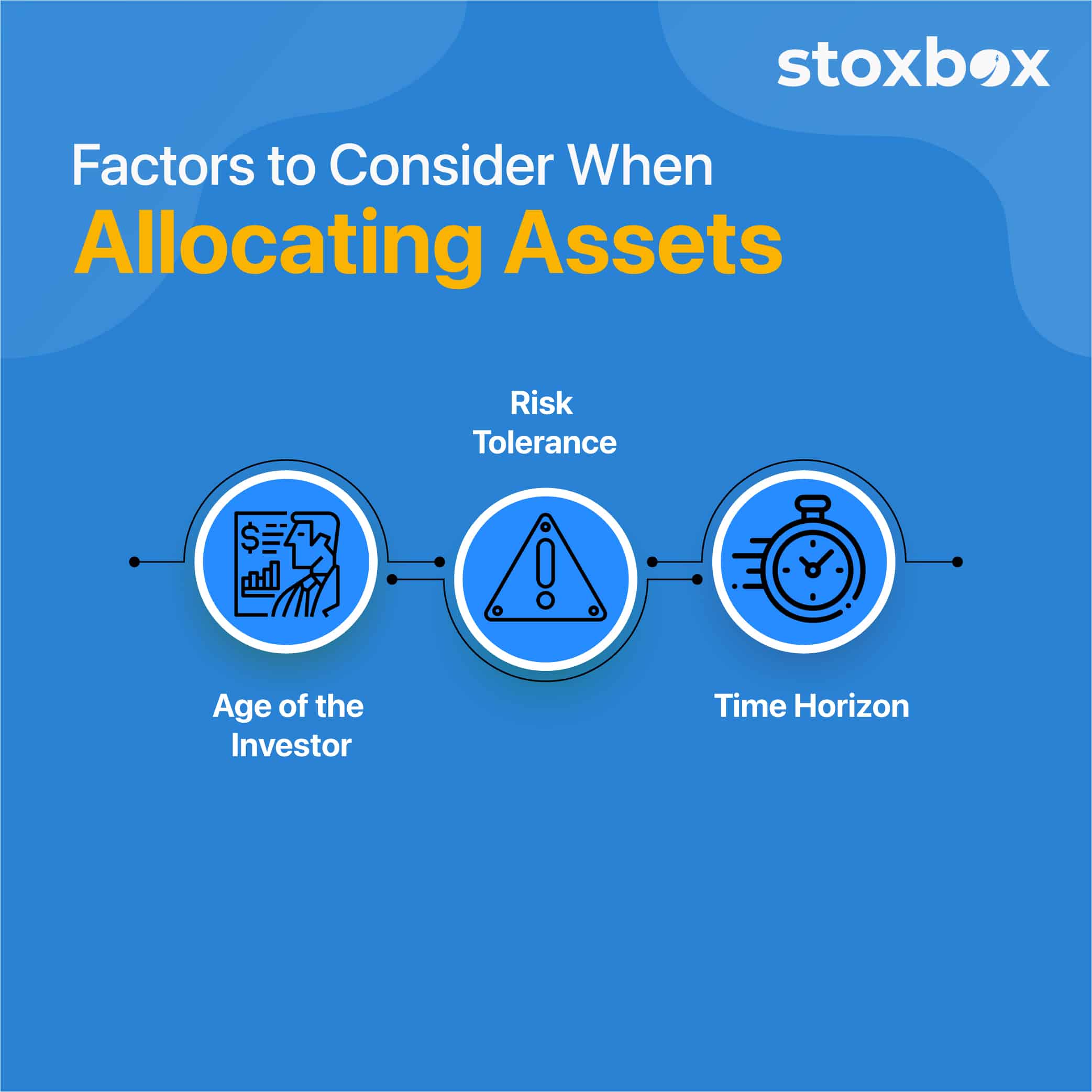Introduction
Asset allocation is an investment strategy that involves dividing the portfolio among different asset classes like cash, equity, gold and bonds. The main aim of asset allocation is to balance risks. Each asset class has varying degrees of risks and returns. By proper allocation, investors can save their portfolios from sudden market crashes.
Is the concept still not clear? Let us try to match asset allocation to real-life scenarios that do not connect with the stock market.

Have you ever observed street vendors selling completely unrelated products like sunglasses and umbrellas? It seems odd, doesn’t it? But why are they selling products which are not related to one another? Because sellers know that it is hard to sell sunglasses when it is raining. But it is easier to sell umbrellas at moments. They diversify their products to avoid losses due to sudden weather changes.
I hope now you understand the concept of asset allocation. Now let us get back to our world of investing. Various asset classes behave differently (some move up and some down) based on market conditions. But the history says that if one asset class moves up and another goes down, it balances the losses. By diversifying the portfolio in various asset classes, investors can save their investment from significant losses. You can read more about portfolio diversification here.
Asset Allocation 2021. India |
Asset allocation: Popular Asset Classes and their Importance in Portfolio Management
There are many asset classes, but in this article, we will talk about only four popular types that help investors achieve most of their financial goals.
Asset Allocation 2021. India |
- Stocks or Mutual Funds
Among all the asset classes, stocks are the ones that carry significant risk with high returns. If appropriately invested in stocks, it can act as a wealth creator. Stock markets are highly volatile in a shorter span. But, in the long term, stocks generate good returns.

Asset Allocation 2021. India |
Stock markets operate in cycles: for a few years, they behave in bearish ways (they move in a downward direction), and for another few years, they behave in a bullish manner (they move in an upward direction and recovers losses). To profit from stocks, investors need to be long term players. That being said, If you are a beginner and do not know how to do fundamental research, you can opt for some ready-made portfolios or invest in mutual funds.
Refer to this link to explore more about ready-made portfolios.
Asset Allocation 2021. India |
- Bonds
On a long term basis, the average returns from bonds vary between 5%- 6%. On the other hand, saving banks offer only 3%-4%. We can say that the returns from bonds are usually higher than saving bank interest and lower than stock market returns. Because of their less volatile nature, bonds are safer than stocks and offer modest returns. That is the reason why conservative investors allot a significant part of the portfolio to bonds rather than stocks. Because of its less risky nature, bonds attract many investors, especially amateurs. The bond returns vary based on time, bond quality etc. Low-quality bonds offer higher returns, but the investor will carry a high risk. Similarly, the bonds with less time offer fewer returns when compared with long term bonds.
- Commodity
The returns from commodities are independent of stocks and bonds. Adding commodities like gold or silver can help diversify the portfolio. Historically, whenever the stock market crashes, the value of gold and silver touch their peak value. If gold is added to a portfolio, it can lower the risks and boost the overall returns. Inflation affects the returns of stocks and bonds, but that is not the case with commodities like gold or silver. Their value improves with increasing inflation. These can be used for hedging the portfolio against inflation. You can even check for Sovereign Gold Bonds.
- Cash
Among all the options, cash and cash equivalents (saving, fixed deposits, treasury bills, certificate of deposits etc.) are the safest investment instruments. The chance of losing money by investing in this asset class is almost zero. But that minor nature comes with a side effect, that is, fewer returns. Yes, returns offered by the cash market are way lower than all the remaining asset classes. Not only the returns are low, but also cash instruments are badly affected by increasing inflation. Investors whose primary goal is to protect the capital allocate most of their portfolios to cash and equivalents.
Factors to Consider When Allocating Assets

- Age of the Investor
The age of the investor plays a major factor to consider while allocating the assets to the portfolio. Investing in the stock market is a long term game. Investments can be profitable if the investor holds their stock for a longer time. Young investors have a chance to take more risk compared to older ones. An investor who is in his 20s can allocate most of his portfolio to equity for high returns and smaller parts to bonds and cash markets. Allocating most of the portfolio towards bonds and cash is better for older investors.
To know about the top 10 habits of most successful investors, you can refer to this article.
- Risk Tolerance
It is essential to know your risk tolerance before investing in any asset class. Risk tolerance is nothing but your ability to lose a certain or the entire amount of the initial capital for achieving higher returns. Aggressive investors have higher risk tolerance compared to conservative investors. So, it is better to introspect and know what kind of investor you are before you start investing in any kind of assets.
- Time Horizon
The time horizon is nothing but the number of years an investor is willing to stay invested to achieve his/her financial goal. Investors with a longer time horizon may be willing to take more risk to withstand the volatility. Such investors allocate most of the portfolio to stocks. Investors with a shorter time horizon may not handle the volatile nature of the stock markets. So, they choose to allocate most of their portfolio to bonds rather than stocks or mutual funds.
Know your Financial Goals
Investing without a goal is like sailing the ocean without navigation. Set your financial goal before starting investments. We all have objectives. If you want to create a large savings portfolio, buy a yacht or holiday home, fund your child’s school, or merely invest in a new vehicle, you can factor it into your asset-allocation strategy.
If you want to buy a beachfront retirement condo in 20 years, you don’t need to be concerned with short-term stock price swings. If you have a child attending college in five or six years, your wealth portfolio will need to be shifted to safer fixed-income assets. Your financial goals, risk management capacity, age, and targeted investment period play the most vital part in making investment decisions.
You might also Like.
No posts found!
